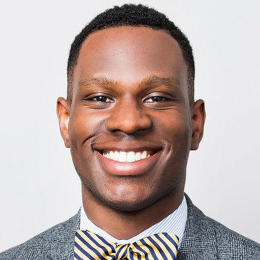Charter Schools Have An Awkward Secret: They’re Not Very Good At Innovating
So a group of education entrepreneurs in New Orleans is helping them learn the ABCs of disruption, by starting small.
When Nia Mitchell took over as principal of Algiers Technology Academy, a New Orleans charter high school, she knew she wanted to introduce project-based learning into the curriculum. “That’s the direction that we’re going,” she says. But she had her hands full—only 19% of her students were scoring at college-ready levels, or at least 18 out of 36, on the ACT, and only 65% were graduating within four years. Plus, her opportunities to observe project-based learning in action at other schools were few and far between.
“I go and I see, and then I don’t get to see it again for months,” she says. Project-based approaches, in which students learn information and skills by tackling complex, interdisciplinary problems, are “relatively new for the state of Louisiana.”
That’s when Mitchell met Jonathan Johnson, a teacher turned entrepreneur. He had been prototyping his idea for a new charter school, called Rooted, through an after-school program, and was looking for a chance to test the model during the school day, in the form of a “school within a school.” Rooted’s pedagogical foundation: project-based learning.

“Public education is not creating a way out for kids like we need it to be,” says Johnson. “We have to figure out how to serve these kids in different ways.”
Johnson cold-emailed the leaders of every charter school management organization in New Orleans; only three responded, Algiers among them. He pitched Mitchell’s boss, and then Mitchell herself. Both saw a natural fit, particularly given their shared emphasis on training students for careers in digital media. They negotiated terms, from funding to uniforms, and became partners, with Algiers playing host to Johnson’s experimentation in the same way that large companies host innovation labs.
“Technology is [creating] the high-wage, high-demand jobs that will be in Louisiana for the next 10 to 15 years,” Mitchell says. “We want to make sure our students are prepared.”
Now, when Johnson opens Rooted this fall, he won’t have to think about buying furniture, hiring social workers, or coaching a marching band to lead pep rallies. His students will arrive on campus in Algiers buses, eat lunch with their Algiers friends, and participate in Algiers extracurriculars. But they’ll rely on Rooted to manage their academics.
“Half the day students rotate through a digital curriculum at their own pace, taking all their required classes on it,” Johnson says. “The afternoon—and this is what makes us more innovative—is industry-focused, project-based learning.”
For now, that means working on digital media-related skills, like using HTML5 and JavaScript to build mobile apps. Johnson expects students to present their projects to local partners (Google recently signed on, along with startups in fields like 3-D printing and digital branding), and further hone their skills through summer internships. If all goes according to plan, they’ll be looking at job offers when they graduate high school.
“In our country, we’ve created a narrative that says, ‘We want to send you to college. Oh, and by the way, you’ll probably be $40,000 or $50,000 in debt,’” Johnson says. With Rooted, he hopes to put students $40,000 or $50,000 ahead. “If we could prepare kids for these jobs, and to have upward mobility in these companies, it’s really disrupting the pipeline.”
It also has the potential to disrupt how Algiers Technology Academy operates, and even how charter schools innovate over time.
Charter schools’ early champions believed that the sector would spark innovation across K12 education. Allow charters to experiment, or so the argument went, and then support the knowledge transfer of their best ideas to mainstream classrooms. But over the last decade, the education landscape has calcified into pro-charter and anti-charter blocs, leaving little room for collaboration and saddling charters with pressure to produce consistent results or risk damaging the sector’s reputation. Moreover, charters face challenging economics—for one, they typically pay to rent space—further reinforcing market dynamics that favor scale and standardization. As a result, today’s system is largely dominated by charter school networks that adhere to the “no excuses” school model, with its high academic expectations, structured lessons that are timed down to the second, and strict discipline.
“No excuses” has been shown to deliver strong results in math and reading—witness the impressive standardized test scores at Success Academy Charter Schools, among others. But in a world where personalized instruction and socio-emotional learning are gaining traction, the idea that students should be memorizing math concepts by singing in unison—a tactic made famous by KIPP, a charter school pioneer—is beginning to look archaic. Individualization is in, and individualization has not been charters’ strength.
“It’s hard for existing schools to pivot or test out this kind of thing,” Johnson says.
To be fair, charters have been waking up to the need to adapt. Some have been introducing programs designed to increase teacher tenure, like nutrition advice and childcare. Some are investing in technology—for example, Summit Public Schools, one of Fast Company’s most innovative education companies, pairs Facebook engineers with teachers in order to build new classroom tools. And one brave charter network, Achievement First, teamed up with IDEO last year in order to redesign its model from the ground up, a project it dubbed “Greenfield School Design.”
“What would it take for our schools and our scholars to make real breakthroughs?” Achievement First’s leaders asked.
But introspective questions like that remain a rarity. “When you look around the country at the charter sector, they’ve been pretty absent from the conversation about innovative school design,” says Matt Candler, founder and CEO of 4.0 Schools, a nonprofit accelerator for aspiring education entrepreneurs. Instead, he says, charter leaders are more likely to ask, “Is the authorizer going to punish me if this model doesn’t work?”
To help derisk that threat of punishment, 4.0 Schools has introduced a new incubator program called Tiny Schools. Rooted is one of four participants in the inaugural cohort, all of whom are based in New Orleans, a charter school hub and 4.0’s home base.
“The idea is to pilot a school design at a small scale with voluntary students and families participating,” Candler says. His requirements—no more than 15 kids, no more than three educators, and no middle management—are designed to induce Silicon Valley-style rapid prototyping. “To really keep a founder of a school focused on that pilot, the way a software founder can stay focused on that beta test, it’s just incredibly difficult [in education],” he says.
By necessity, it also involves blurring the lines between public and private sector education. Rooted will function as a public charter school, thanks to its partnership with Algiers (last week Johnson was approved for a charter of his own, paving the way for Rooted to expand). But NOLA Micro Schools, another participant, is launching this fall as a private school; tuition ranges from $6,000 to $12,000, depending on what families are able to afford.
“You’re joining our community and we trust you in this,” founder and head teacher Kim Gibson says of her unusual pricing structure. Ultimately, she hopes to be able to offer scholarships, while keeping costs low. “If we do not have a diverse group of students, I think we have totally failed,” she says. “Our school needs to be reflective of our city.”
Gibson is modeling NOLA Micro Schools after Acton Academy, an influential private school in Austin, Texas, that operates an affiliate network (Gibson will pay a standard fee, 1% of her budget, in order to join). Like Acton, she plans to make the student the center of the classroom; teachers will play a support role as students pursue “quests,” engage in socratic discussions, and complete lessons in core subjects at a personalized pace.
“The challenge in big schools is they don’t have the time or the freedom and the flexibility to let programs like this pilot before they lose funding or have a performance test,” she says. “You can’t go into a massive charter school and implement this whole new curriculum this year. Things like this need to start small, and grow slowly.”
Noble Minds, another Tiny Schools participant, is focused on serving children with emotional and behavioral disorders. Founder Vera Triplett, who previously worked in mental health counseling, plans to incorporate counseling and hands-on learning, features that she sees as lacking in many existing charter schools. “What I hear a lot is that people are wanting their child to be more responsible for their own learning,” she says. “The families that I have encountered fall into one of two categories: children who are struggling to be successful in the traditional reform models—to them I was an oasis in the desert. The other families are not necessarily having issues, but they would like for their children to experience a more nurturing school environment; they’re not crazy about the no-excuses culture.”
Triplett and her Tiny Schools peers seem to have struck a nerve that lays bare one of the major issues facing the charter sector: In theory, charters were supposed to offer families choice. In practice, they offer near-identical products, with teacher quality serving as their one key differentiator.
Tiny Schools is helping educators upend that status quo, one conversation at a time. For Johnson, that next step involved pitching his toughest potential critics: a room full of rising Algiers juniors, selected by Mitchell. Would they take a chance on him, a chance on their futures?
He needn’t have worried. “This one girl started crying when she realized that we couldn’t accept everyone,” Johnson says. Why the tears? His vision for Rooted, and “the job opportunities, how I painted them.” At schools like Algiers, where more than 90% of students qualify for free or reduced lunch, the promise of a job—not just any job, but a good job, at a growing company—has enormous power.
“We’re doing what’s best for students, collectively,” Mitchell says. If they succeed, other school leaders may soon be looking to prototype in the same way.
Fast Company , Read Full Story
(160)














